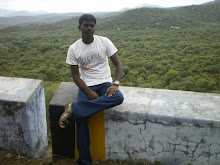Braving Etna with the airborne volcanoash trackers
I'M IN a helicopter, flying low over the verdant foothills ofmount Etna in Sicily. To my left, a tiny light aircraft is approaching the immense volcano's sweeping flanks as an ash plume rises from it. The diminutive plane lookslike a bug buzzing a tetchy grizzly but its size belies themajor impact it could have: it is carrying a raft of experimental instruments that could reduce the mayhem that restless volcanoes cause to aviation.
Aircraft engines must be protected from silicate-based volcanic ash particles.That's because they melt at engine-operating temperatures, coating turbine blades with thick, glassy gunk that blocks airflow, hindering fuel combustion and causing engines to cut out . Currently, the International Civil Aviation Organisation tells pilots to avoid flying in ash if its concentration is above just 4 milligrams of ash per cubic metre. That's why in the spring of 2010, when ash began spewing from the Icelandic volcano Eyjafjallajökull , aviation in Europe was grounded for extended periods between 15 April and 17 May. It cost the aviation industry billions of dollars.
Sensors attached to planes are needed to let pilots detect ash clouds up ahead so they can still fly but just navigate around them - much like weather radar warns them of storms. But the geochemistry of volcanoes varies widely andno one knows which are the best particles and gases to detect in-flight to help guide aircraft around ash clouds.
So the scientists I'm observing at the landing strip at Calatabiano, Sicily, are using a light aircraft to do two things. First, they areperforming initial low-altitude, low-speed tests on an ash sensor developed at the Norwegian Institute for Air Research (NILU) in Kjeller, funded by the UK airline Easyjet. Second, Konradin Weber at Dusseldorf University of Applied Sciences in Germany is training four different sensors on Etna's ash-and-gas plume, and exploring what other chemical markers might help predict trouble forpilots.
NILU's Fred Prata says his sensor comprises a pair of fast-sampling infrared cameras - one seeking telltale IR absorption at a wavelength of 10 micrometres and the other at12 micrometres. Software combines these to detect silicate-containing ash particles of 2 to 40 micrometres in diameter, the size that wrecks engines. This, Prata tells me in the airstrip's tin hangar, measures the ash "dose" ahead of the plane, how far away it is and its altitude. Combining this with lower-resolution satellite data allows the crew to work out an alternate course. His tests last week were encouraging, with a very lowfalse-positive rate, but needs testing at airliner speeds and altitudes.
Out by the runway, Weber says other volcanic emissions could provide important information too. Hisequipment includes a counterfor micrometre-scale particles, a nanoparticle counter, an ultraviolet detector for measuring sulphur dioxide concentration - which can indicate heightened volcanic activity - plus a hydrogen sulphide/carbon dioxide meter. The sulphur dioxide sensor gave Icelandic airport authorities the confidence to reopen airports after the Grímsvötn volcano erupted in May, for example.
Konradin hopes that nanoparticles on the breeze might also give early warning of ash ahead. "It's anew approach," he says."Nanoparticles might give usan indication of volcanic ash plumes, and may be a way totell you the age of the plume and how it is developing."
For airlines like Easyjet, which lost £55 million in the 2010 groundings, sensors tohelp keep planes flying cannot come soon enough.
Subscribe to:
Post Comments (Atom)

No comments:
Post a Comment